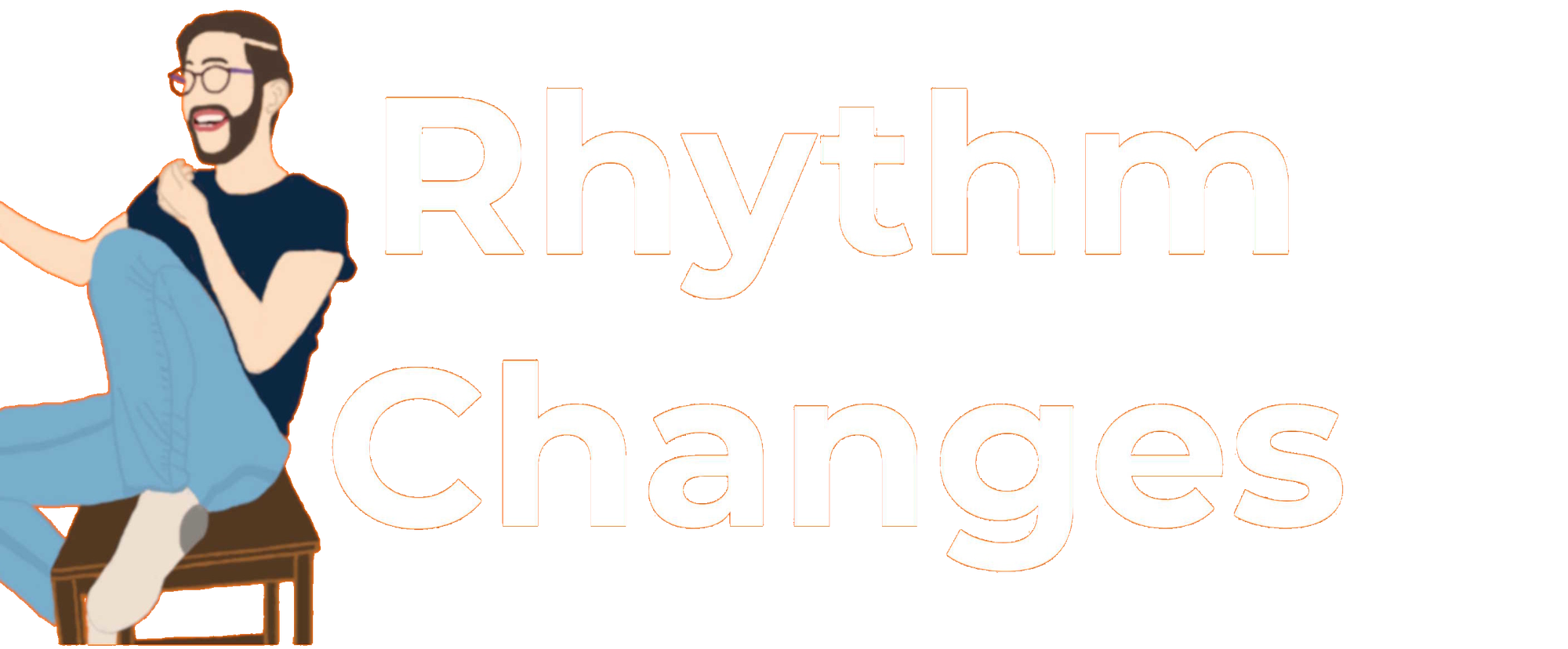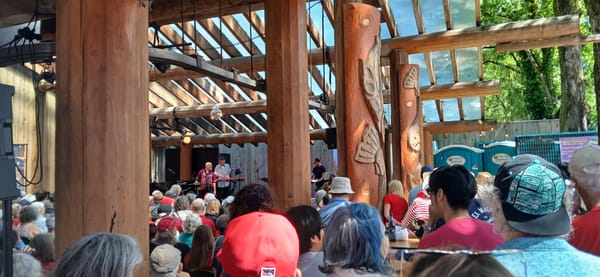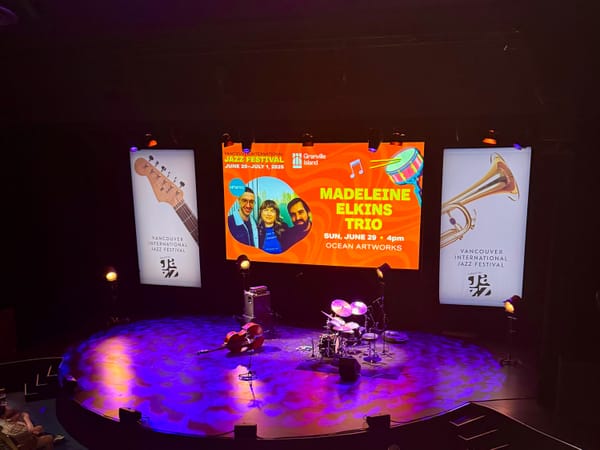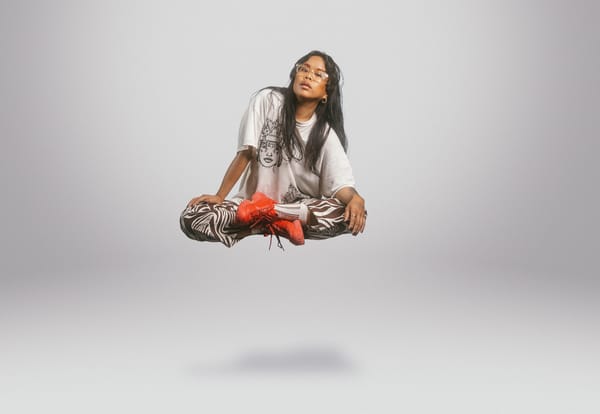Jacob Wutzke & Lucas Dubovik: Take it in Stride
An interview with the drums-sax duo partners about their idiosyncratic audiovisual project
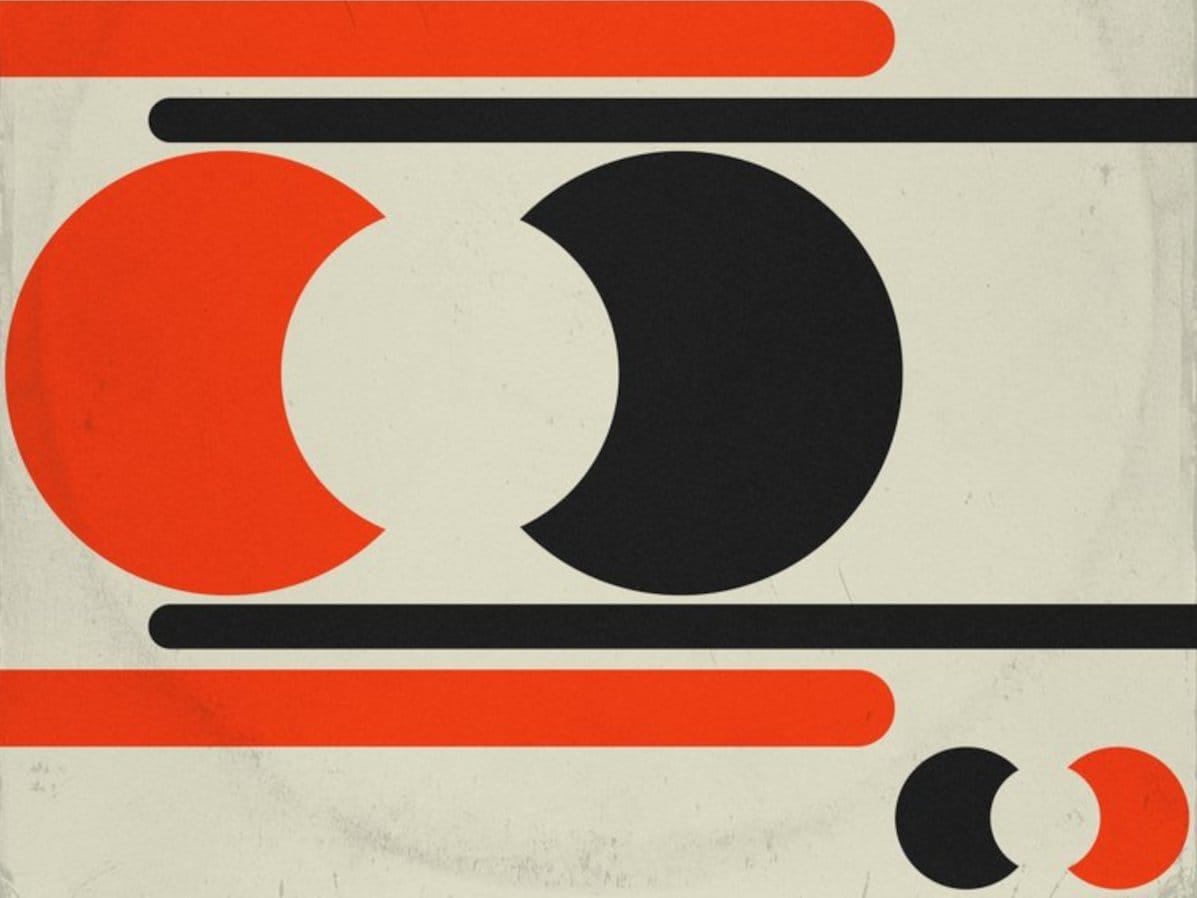
Jacob Wutzke and Lucas Dubovik's drums-sax duo project Take it in Stride is an idiosyncratic independent project, available on streaming and as an exclusive visual album on Wutzke's website. Not only does each track have a video that the album's streaming version doesn't include, the project has a distinct mixing approach where the mix moves in tandem with the moving cameras.
Musically, the short duo project gives me strong Sonny Rollins vibes, hearkening back to the classic cut from Newk's Time "The Surrey with the Fringe on Top" where Rollins plays duo with drummer Philly Joe Jones. It's more downtempo of a session than that, though, both in terms of Dubovik's tone and Wutzke's intensity level.
The room is reverberant, the quality of the sound is great, and Wutzke's drumming only seems to get better all the way to the last track, "Short Story". Dubovik has a knack for eighth-note lines that he gets all the space in the world to stretch out on, quite straight-ahead – as these two were on Wutzke's previous record as a leader, Show Yourself.
I recently interviewed both musicians about releasing this audiovisual EP, their next plans as leaders of their own bands, and when they're each coming to Vancouver (or in Dubovik's case, coming back). Wutzke feels like the bandleader in parts of the conversation, but it's clear that the two good friends are appreciating the moment in time that they've captured along their accelerating careers, as well as what the project says about their takes on navigating the business.
WILL CHERNOFF: Okay, it's a cool format with the videos, with the way that you released it, all that stuff, but how'd you decide to do it in the first place? You're both doing so many different things. Why come together and do this now?
JACOB WUTZKE: Yeah, that's a good question. Lucas and I have been playing together forever. I mean, man, at this point, I think you're my longest musical collaborator!
LUCAS DUBOVIK: I think so too.
JW: Many years, yeah. I feel like I understand your playing and you understand mine. As to why we played in a duo, I remember we had set up a playing session that was supposed to be a trio, and the bass player forgot to put it in his calendar or something. He just didn't show up. We were like, "Well, we're here! We already set up, it probably won't be very good, but we should at least try."
And I remember just being pleasantly surprised. My third eye opened up or something, and it just felt very free. I can play anything that I want to, Lucas can play anything that he wants to, and there's certain things that musically are just easier to do with fewer musicians: tempo changes, key changes. As long as we make eye contact, we can kind of do anything. In that sense, it just kind of worked and became natural.
We mostly played jazz standards and a couple of original tunes. We worked out arrangements, worked out ways of doing things, and we ended up playing about four or five shows and doing this record.
WC: I think one interesting thing about it is the length. At different times or with different people, you might have felt obligated to make a 40-minute album, or more. And there's cost and time savings to that as well, but I think this length of project is trending. I see fewer people making full-length albums and more people either just straight-up doing short projects or doing something else that's cool with that extra time that you might have, like the video and the distribution component of it. Do you have any thoughts on this kind of thing?
JW: Yeah, and I agree with what you're saying. The idea of the 50 minute album, I'm not going to say it's dead, but it's no longer the gold standard. You don't have to reach for that.
It's not like we invented this [format]. I can think of a handful of Blue Note recordings from the '50s and '60s that are 20 minutes long, you know? But yeah, my general philosophy in making a project is just make it until it's done. Don't try to stretch it into something that it's not. What do you think about that, Lucas?
LD: I didn't even think about it in regards to trends. As a sax player, I guess I just didn't want to blabber [laughs]. I talk a lot already, so I have only so much I can say with no bassist and no chordal player to interact with. We're having a conversation, and some are longer, some are shorter.
JW: Yeah, and that's a good point too. I feel like neither of us felt the obligation to make each tune nine minutes long, like it might be in a quintet. It's just when the tune is over, it's over. Yeah... just play it until it's done, and let it be that.
WC: Yeah, which I love. I love that that worked out that way. One of the first musical takeaways that I had when I listened to it was that there were two strong Sonny Rollins touchpoints. "Without a Song" is one of the tracks from The Bridge, and you've got "Pannonica", which appears on Brilliant Corners by Thelonious Monk. Was Sonny Rollins a big influence for this project? What do you think about that?
LD: Wow, well for one, I love Sonny Rollins. I've checked out a lot of Sonny Rollins, and for sure [he is] a huge inspiration. As far as the project goes, we didn't really speak about influences, but I'm sure it's subtly seeped in through just who I am and what I listened to.
JW: Yeah, of course the influences are always there. I remember having one discussion about this, and the thing that was kind of exciting about it for me is that there's no direct influence. There are very few things that were done with this kind of instrumentation. I can think of Walter Smith III's TWIO album, there's one track ["We'll Be Together Again"] that he does as a duo with Eric Harland. I had that in the back of my mind.
We were coming into this from a blank slate and just trying to create something. We have our influences as musicians, but in terms of the kind of album we were trying to create, it was pretty open, which I think was great.
WC: Yeah. Let's talk about the video part of it as well. You've talked about why you thought it was a good idea to focus on video, but let's look at it this way. You've now released the project on streaming. What is somebody missing if they only stream it and they don't go watch the videos? Or, what are they going to get if they go watch the videos after they discover it only on streaming? Talk about that.
JW: Yeah, I'd love to talk about it. We had the opportunity to video-record it inexpensively. We just had access to these resources, which was awesome.
The two versions – the version that you find on Spotify, and the version that you can get with the videos when you purchase through my website – are actually two different mixes. The version that's on Spotify was recorded with literally two microphones, fancy microphones. Sennheiser AMBEO mics, which record in spatial audio. I think that mix sounds great. You can put on your headphones and kind of feel like you're there, in one position, in the room with us.
But with the videos, it was pretty cool. We made a cut of all the videos, put it into Pro Tools, and then mixed it from that perspective. In other words, if you're seeing Lucas up close – I'm sorry about that, first of all [laughs]–
LD: [laughs]
JW: No, but you'll hear more of the saxophone in that moment. There were close mics as well, so if Lucas is the one on the screen, we brought up that microphone in that moment. If it pans over to me, you'll hear more of the drums in that moment. If it's zoomed-out and you're seeing both of us, then it's just a balanced representation. So what it ended up being is you put on your headphones, you watch it, and you kind of feel as if it's you who's moving around and checking out different parts of it.
It's pretty cool. The drums and saxophone [with respect to their timbres] are so different anyways. Even if you mixed it poorly, you would still be able to hear both of us, they're just so different. So I figured we could take a risk and just try some sort of perspective, try something different.
WC: Yeah, sounds good. Okay, when you were playing all those tunes, did you already know all of that, or was that an idea that you ended up finishing later in your mind? Was the concept already full-on, and you knew it while you were playing?
JW: Well, kind of. Yes, we knew that there were going to be cameras, that there would be some sort of edit, and we were going to somehow twist the audio around to fit in with the video.
Then we sort of had to see what we had. What did the edits look like? How did these transitions work? The transitions ended up being pretty hard cuts, like we cut from here to here to here, so that's how the mixes work too. You'll hear all of a sudden more saxophone. It's subtle though. It's not like now we're in a different room or anything, but you just get a feeling that you've moved around a couple of feet. I don't know. Lucas, did it turn out about the way you expected?
LD: Yeah, I think initially out of the gate when Jake proposed the idea, we wanted to do something special, whether it was an audiovisual project [or] a chance to work with certain binaural microphones. The one that comes to mind is the Neumann [KU100] "Fritz", I think it's called. It just looks like a head. We got to work with that. And we were talking like, what if we could get this weird mic head, and then maybe someone could carry it? And then we even talked about putting it on a track, or putting it in an RC car or something. That's what came to mind.
We wanted to do something with it. We found that the duo setting to be exciting, but we wanted to add not only an accessible kind of twist to it to engage a bigger audience, but just have fun with it, too.
JW: Yeah, I've been really interested in jazz music where the production is a notable part of it. It's not just a representation of what's happening, but it's actually like an artistic choice. I'm still interested in the idea of the microphones actively moving around while it's being recorded, but I'll have to figure out a way to do that, quietly, you know, that's obviously the big issue.
But yeah, I'm happy with how it turned out. We were able to get this effect without building train tracks for this head, yeah, the binaural head. You're right. We did start by talking about that. I remember doing my undergrad and learning about these recordings, and there's like a binaural haircut you can put on your headphones. It sounds like you're getting a haircut. And I remember just having my mind blown like that, that audio can have that profound of an effect on your brain. I thought, wow, what if we had great jazz music that's recorded with with that kind of sophistication? That would be cool, you know.
LD: Yeah, also playing into our our ASMR crowd. I know that's popular now [laughs].
JW: It's true [laughs]. Yeah, it is.
LD: It's technically an audiophile record!
JW: [laughs] Yeah.
WC: Why did you call it Take It in Stride? There's a track called "Take it in Stride" too. Anything you want to talk about with the track titles or album name?
JW: Well, "Take it in Stride" is the one original composition on the record. It's the one that I wrote, and it's just kind of a sentiment that I was... well, there's two sides of it. I thought it would be funny to call it "Take it in Stride", which evokes the feeling of ["stride"-style] piano. And there's no piano, there's actually no chords at all. But it's just a sentiment that I had been thinking about, that things happen in life – some positive, some negative – you just take them with you. And you take them in stride, and move forward.
WC: Yeah, that's cool. This format, you talked about how you appreciate the production having unique aspects. Do you see yourselves bringing another gear to a project like this very soon? This multimedia extra layer, is it something that you're going to be bringing back soon or often, or how do you think about that?
JW: I'll speak for myself. I have a loose concept of something that I would like to do for my next recording, something to the likes of recording maybe five or six tunes. Then I would like to have a producer chop them up and have five or six remixes for [each of] those things. I think it would be cool.
I'm not so uptight about the recording process that I think what I played is the word of God and it just has to be that way. I think if somebody hears it and they decide, "Oh, what if I put a cut right here, and put this backwards, and make this a little faster?" Yeah, I'm open to that.
So as an experiment, I'm in the early stages of thinking about this. But I'm interested in something where the produced element is like a creative role [with] some editing in it.
LD: Yeah, I'd also like to do something like this [again] in the future. This project brought it into scope, because I'm a little more traditional with my approach to projects that [go like] studio, and then the performance, and the view of it is in the live gig at the venue. So doing something like this already broadens my ideas of what can be possible. And also, working with the team that we did [Take it in Stride with] really opened up a lot of possibilities for what can be done.
JW: Yeah, well said. I really don't mean to put down a traditional way of recording and presenting music. That's not what I'm saying. But I am saying that it has been done thousands if not millions of times, maybe as good as it will ever be. It's probably worth exploring other ways of doing this.
WC: Yeah. There was also the release timeline and the layers to the release. That feels like something that you spent some time considering, and I'm wondering if there's anything you want to say about that. How did you design that?
JW: Yeah, my personal concept is just that everything moves so fast. If you release your thing all at once, it gets one big post, maybe it does well, maybe it doesn't. But it's gone the next day anyways, you know? If you can find a way to stretch it out, that's great.
So yeah, a couple of singles. They both have little pre-save campaigns and little stories that go along with them, so people are passively hearing about this project for a few months. We did a pre-release for the videos incentivizing people to hopefully purchase it, and then the videos actually released, and then it released on Spotify about a month later. While we were on tour ,as well, we were selling the videos as a digital download pack.
LD: Yeah, I have to definitely applaud Jake on that one. Beautifully masterminded. I mean, we were on tour, things were coming out, there was something in the future, there were QR codes on tables, everything was streamlined – very thoughtful process that I got to witness.
JW: Yeah, I tried my best, you know. It's fully digital, which is a hard sell for some people. I know people like to hold things. But I figured, given the nature of what it is – there's videos involved, there's alternate mixes – what would I do, a CD, DVD pack that I sell? Digital just made sense to me, and I tried to make it as seamless as it can be: scan this code and be done.
WC: If you were doing this in 2004, yeah, it would've been a DVD pack [laughs].
JW: [laughs] Blu-Ray, yeah.
WC: Tell me about this tour that you're referencing, that's happening during this time.
JW: We did four dates in February, We played at Upstairs Jazz Club in Montreal, and then we did three shows across Southern Ontario. It was nice, just the two of us. I've always wanted to travel as a leader, but I always just found it daunting. With a quartet or with a quintet, it's so expensive; If you have an upright bass, you need at least two vehicles, probably. This seemed like a great way to start. We traveled as a duo in my Toyota Corolla, sharing a hotel room, and it's an easy way to get out there.
WC: So, now we're in June. Where will we find each of you over the next little while? Give an overview of some of the things that you – together or not together, both of you – let's just think of June and into the summer, maybe in general. Over the next little while, what are each of you going to be up to?
JW: I have to admit that the summer is slower than it was last year for me, which I'm quite looking forward to. I'll be around Montreal, just contributing to the scene. I have a handful of restaurant gigs, a couple of club dates. I'm playing with Caity Gyorgy June 22nd at Upstairs Jazz Club. I'll be around for the Montreal Jazz Festival this year, so I'm looking forward to just checking it out.
A little further forward than that, kind of unannounced, but you can reference it if you want to: I have an upcoming record titled You Better Bet, which is being released on Cellar. The singles are starting in October, and the record will be out in January.
LD: Big things coming soon!
JW: That's right, the little eyes emoji [laughs]. Yeah, how about you, Lucas?
LD: Same deal: a lot of local gigs, restaurants, [and] hotels is kind of what the summer looks like. I might have some European dates in July that'll be confirmed soon. Then, I have my sophomore album with singles starting in August. That'll be titled Quarterlife with a full drop, I think, in November later this year.
JW: Yeah, and we're looking at probably recording a trio album. October-ish. We might do a recording around then.
LD: Yeah, that's right. I also wrote a new book [of compositions to play]. A third record would be very cool with Jake here. That's probably our next venture together.
JW: Yeah. That one's much more led by you. You put together the book and everything, and it's a great band. We try our best. I guess it's quartet at this point?
LD: Yes, it's with my new quartet, correct.
WC: Wow, so you really dropped this one at the perfect time. You found a space here where you could stretch out this whole release campaign, and enjoy it and put up these videos, and now you're both launching into new leader albums and doing all this stuff. That's really cool timing.
JW: Yeah, it's trying to be prolific, you know. Yeah, as I mentioned, things just move quick, like, At least one thing a year has to come out, for sure, if you want to stay on the radar. Keep it moving [laughs].
WC: Both of you came to Vancouver last year. That's what I have to hear something from you about, is whether or not you have any plans to come back soon, or what do you think that might be, when you might come to my neck of the woods?
JW: Yeah, I imagine you'll probably be there, Lucas. I just confirmed one thing. August 10th: I'm doing Frankie's After Dark with Ilhan Saferali. There may be some other things booked around it, I'm not sure, but I'll be there in August. That's all I've got for now.
LD: Yeah, fair enough. I'm overdue for a trip. I mean, that's home for me. That's where my parents live, too, so I gotta visit them. I'm doing some moving this year, so maybe not this summer, but I'm hoping in the winter with some dates.
Shout-out to my favorite venues, [like] Tyrant. That's the one I was playing at the most. Obviously, big ups to Frankie's and all the other venues, but Tyrant was my favourite. I'm hoping to play there maybe in the winter, maybe for the new quartet record. We'll be in talks!
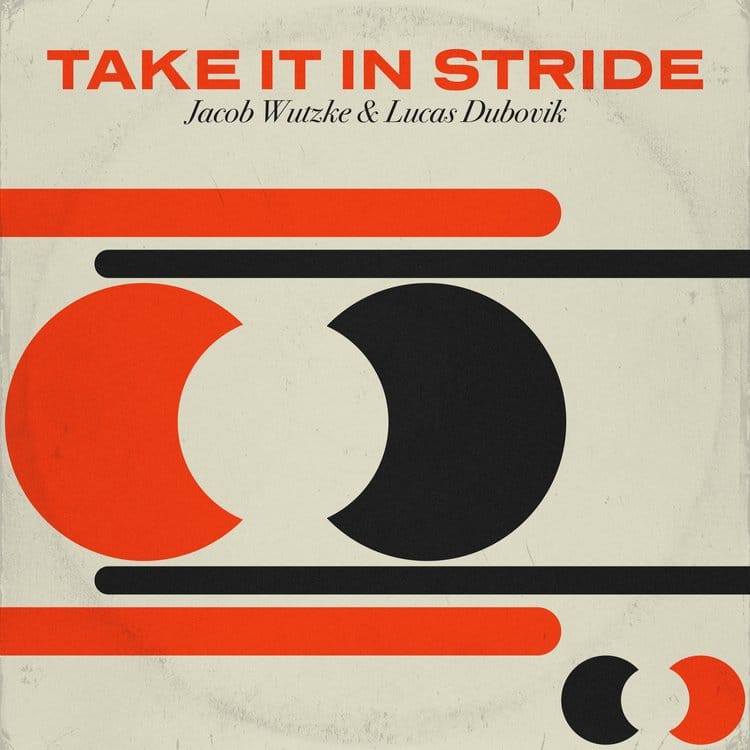
Released May 3, 2024 / Buy digital / available on streaming
